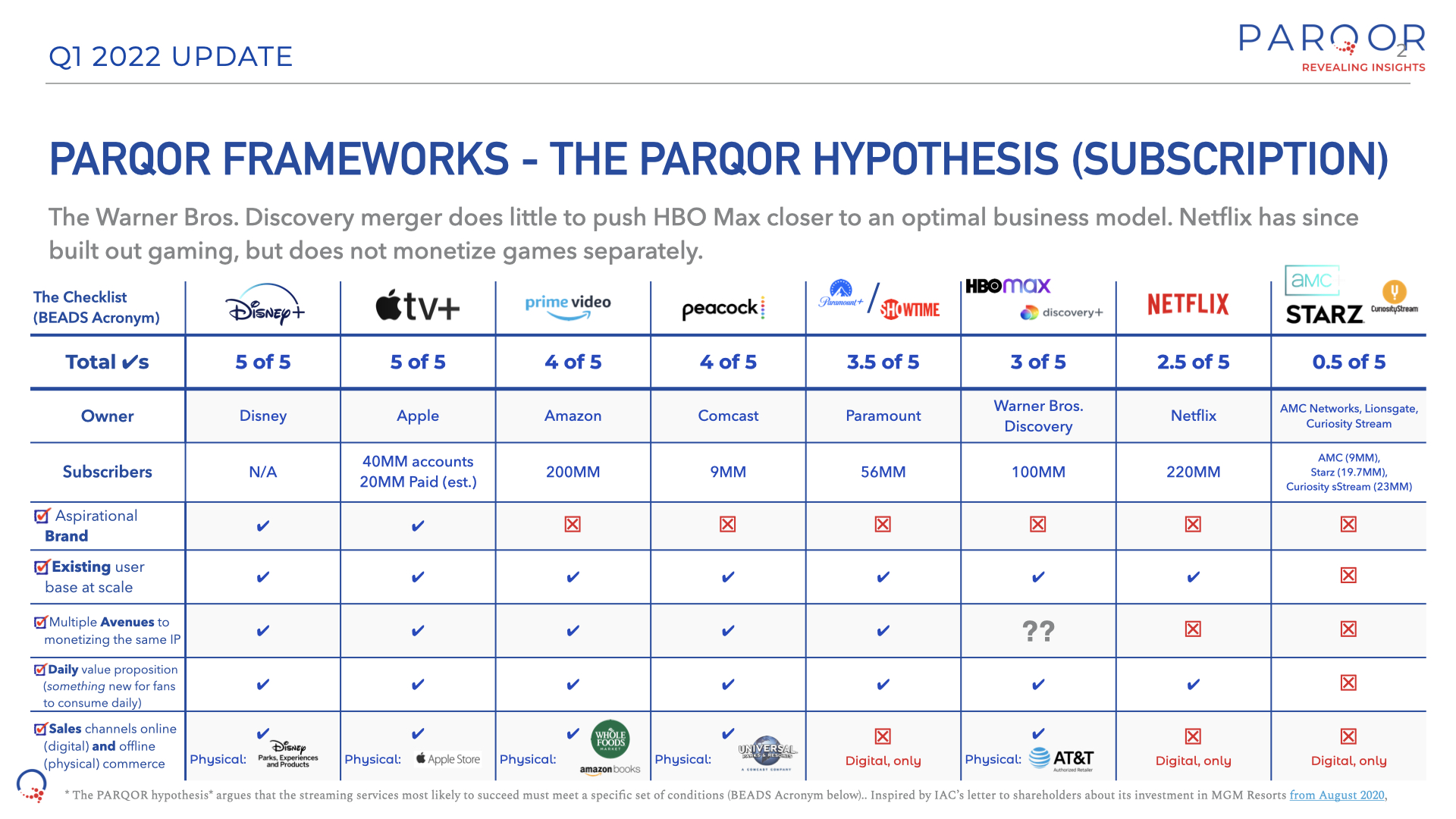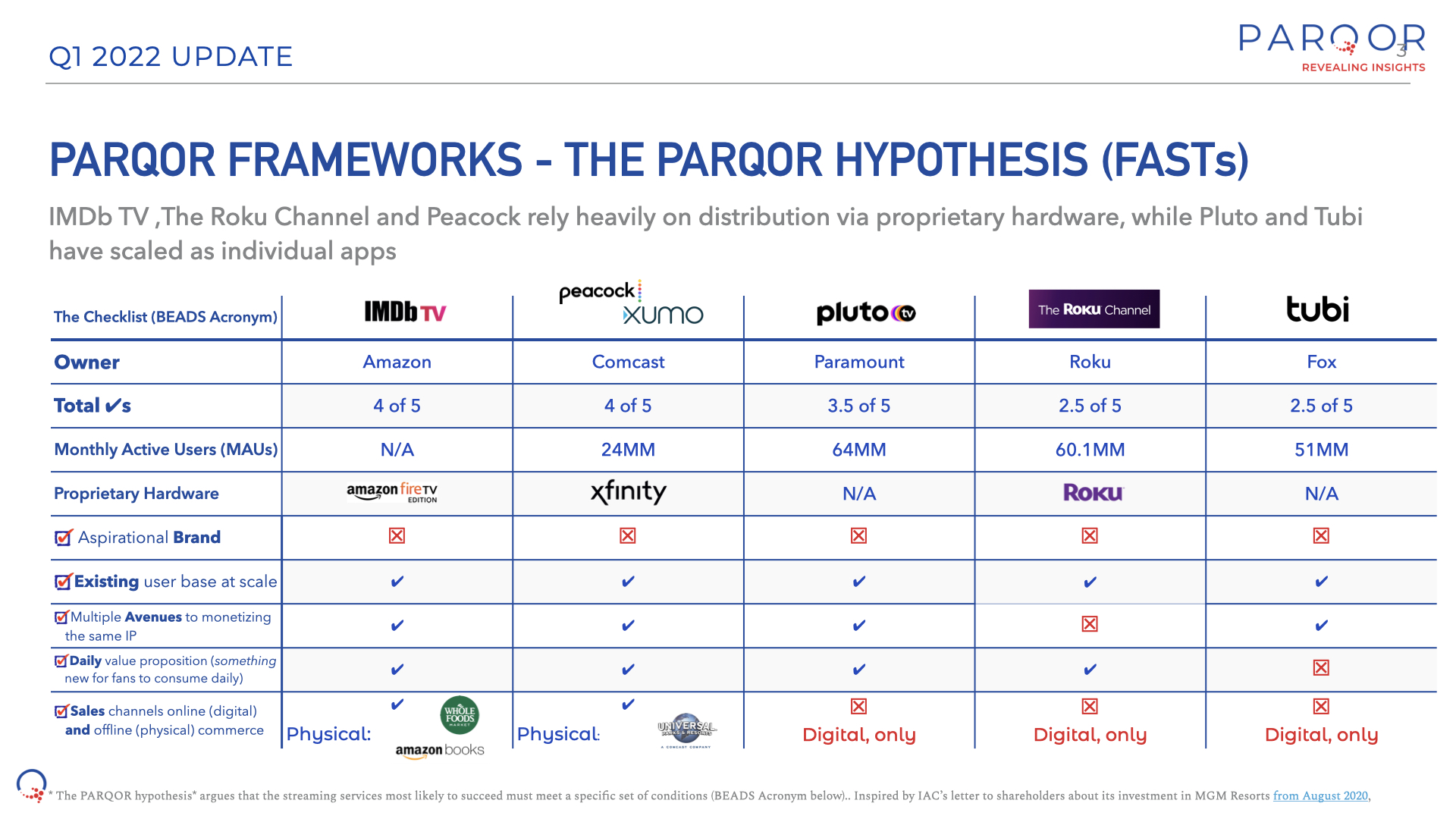The PARQOR Hypothesis
What is The PARQOR Hypothesis framework?
The PARQOR Hypothesis argues that the streaming services most likely to succeed must meet a specific set of conditions (BEADS Acronym below). Also, it highlights how not all media businesses are equally equipped to succeed in streaming.
- an Aspirational Brand
- Existing user base at scale
- Multiple Avenues to monetizing the same IP, and
- Daily value proposition (something new for fans to consume daily)
- Sales Channels: Online (digital) and offline (physical) commerce
Example
A streaming service from a legacy media company has not scaled past 10MM subscribers after six years. Also, it does not offer a large enough library to offer a daily value proposition for users.
How does the PARQOR Hypothesis framework work?
The PARQOR Hypothesis offers a set of attributes for evaluating a media company which were inspired by IAC’s August 2020 letter to shareholders: “Disney’s advantages over pure-play streaming companies with an iconic brand and multiple avenues to monetize the same intellectual property between streaming, theatrical releases, merchandise, and theme parks…”
Real World Example
WarnerMedia currently licenses its DC and Looney Tunes IP to Six Flags Theme Parks, and Harry Potter IP to NBCUniversal’s Universal Theme Parks. However, WarnerMedia lacks Disney’s abilities to:
- market HBO Max on offline sales channels, and
- aggregate theme park visitor data for future marketing campaigns.
Read this free piece in order to learn more:
- Why IAC’s Barry Diller Is Bullish on MGM And Not on Legacy Media Streaming, September 6, 2020



